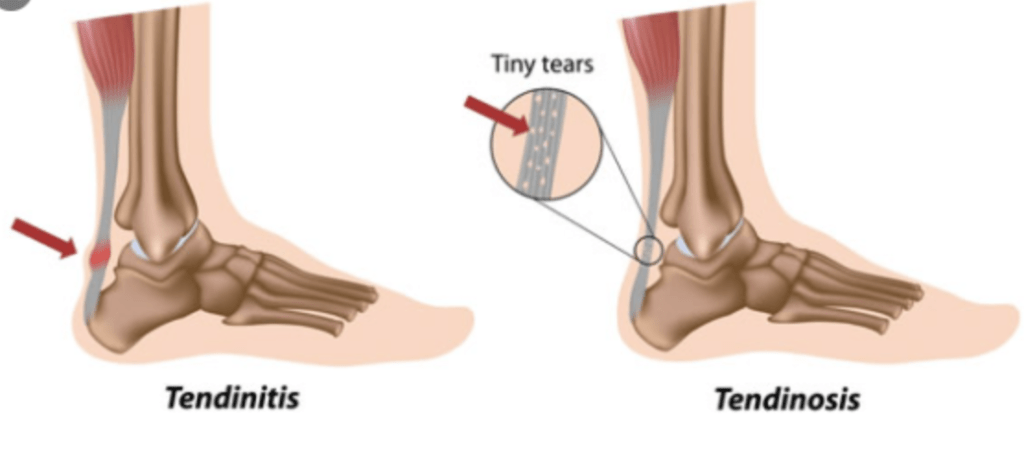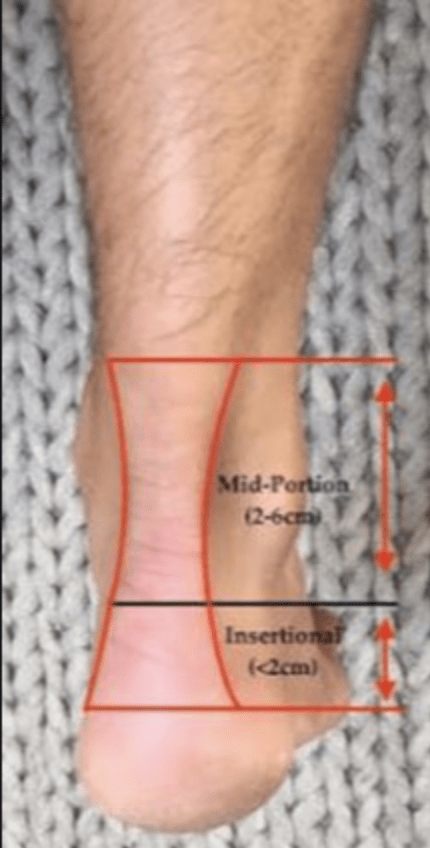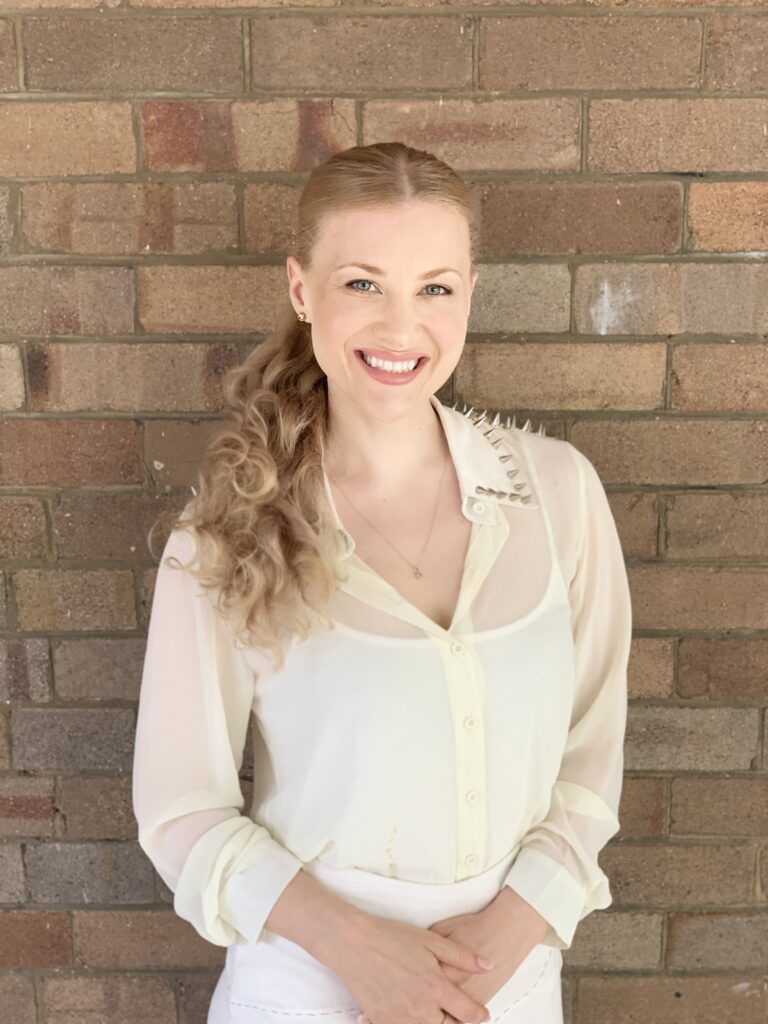What is Achilles Tendinosis?
The Achilles tendon is the largest tendon in the body. It is a thick cord of fibrous tissue attaching the calf muscles on the back of the leg to the heel bone.
Achilles tendinosis is a condition, involving degeneration of the tendon over time. This can lead to pain, weakening and thickening of the tendon. The chronic nature of this condition leads to changes to the type and organisation of the collagen that makes up the tendon and the blood vessels supplying it. This leads to tiny tears due to repetitive damage, without enough time to heal. This condition is common in male joggers between 35-45 but can happen to anyone.

What causes Achilles Tendinosis:
This is a wear and tear type of condition and is not a sudden or acute injury. It usually has no obvious inflammation (red or hot) at the area. Sudden increases in activity or changes to exercise can result in this condition. Putting too much strain on surround structures in the legs or hips can also be a cause.
Risk factors that are associated with achilles tendinosis are:
- being overweight
- male
- ageing (due to decreased blood supply)
- muscle weakness and imbalance
- overloading surrounding muscles (changes to sports/exercise, standing for long periods, reduced recovery time)
- leg length differences
- gait/walking abnormalities (e.g. excessive pronation, range of motion and inefficient walking patterns)
Achilles tendinosis can affect different regions of the tendon. Most commonly the mid portion is affected due to reduced blood supply. It can however also affect the area where the tendon attaches to the heel bone. This is known as insertional Achilles tendinosis.

Signs and Symptoms:
- pain at the back of the ankle or below the calf (2-6cm above the heel bone)
- pain in the area during exercise, long periods standing or when standing after resting for a period of time
- swelling or thickening along the tendon
- weakness or pain when running or jumping type activities
Your Podiatrist can diagnose Achilles Tendinosis with an physical examination and may refer your for an ultrasound image.
Treatment:
- 12 week program of a specific strengthening program called eccentric calf raises (an example of this can be viewed here
- icing and compression
- activity modification
- offloading tension on the tendon via footwear modifications (your Podiatrist will provide these)
- shockwave therapy
- dry needling
- gradual re-loading exercise program
Walk away from Achilles pain today, give your friendly Podiatrist Kari a call today at Move Osteopathy.

Written by Podiatrist Kari Cuffe.
Kari is able to diagnose and treat a wide range of foot conditions as well as general foot health and maintenance and prescription of orthotics and inserts where necessary.
Kari consults at both
New Farm – Friday & Saturday
City Clinic – Eagle Street – Monday, Tuesday & Thursday.
You can book directly with Kari online here
